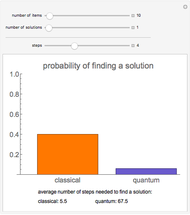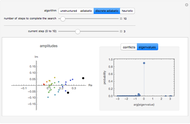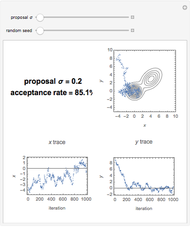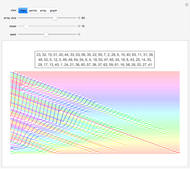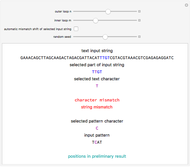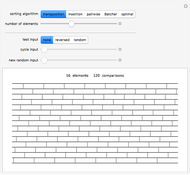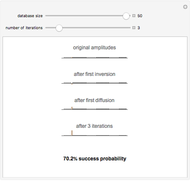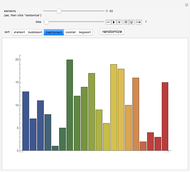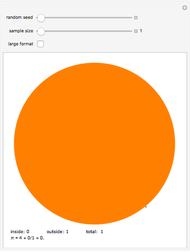Quantum Circuit Implementing Grover's Search Algorithm

Requires a Wolfram Notebook System
Interact on desktop, mobile and cloud with the free Wolfram Player or other Wolfram Language products.
The search problem is formulated as follows: some  -bit integer
-bit integer  is hidden in a black-boxed subroutine that indicates, when presented with any
is hidden in a black-boxed subroutine that indicates, when presented with any  -bit integer
-bit integer  , whether or not
, whether or not  coincides with
coincides with  , returning this information as the value of the
, returning this information as the value of the  -bit binary function. The function is implemented by the quantum circuit bounded by two dashed lines in the diagram. The problem is to find
-bit binary function. The function is implemented by the quantum circuit bounded by two dashed lines in the diagram. The problem is to find  in a minimum number of applications of the subroutine.
in a minimum number of applications of the subroutine.
Contributed by: Alexander Prokopenya (March 2011)
Open content licensed under CC BY-NC-SA
Snapshots
Details
Snapshot 1: Let a quantum memory register contain four qubits  ): three qubits are originally prepared in the state |0⟩ and one ancillary qubit is in the state |1⟩. Applying four Hadamard gates, one for each qubit, we obtain the equal superposition of all basis states of the four-qubit system. A quantum search subroutine bounded by two dashed lines in the diagram is a 3-bit binary function that outputs 1 if its input is some given integer, for example,
): three qubits are originally prepared in the state |0⟩ and one ancillary qubit is in the state |1⟩. Applying four Hadamard gates, one for each qubit, we obtain the equal superposition of all basis states of the four-qubit system. A quantum search subroutine bounded by two dashed lines in the diagram is a 3-bit binary function that outputs 1 if its input is some given integer, for example,  and 0 otherwise. This subroutine together with a quantum circuit drawn on the right of the dashed line form one Grover's iteration. The plot shows that after one iteration
and 0 otherwise. This subroutine together with a quantum circuit drawn on the right of the dashed line form one Grover's iteration. The plot shows that after one iteration  the probability of getting 5 as a result of measurement in the computational basis is equal to 88 percent.
the probability of getting 5 as a result of measurement in the computational basis is equal to 88 percent.
Snapshot 2: The diagram demonstrates how the quantum circuit changes when one more Grover's iteration is added  . After a second Grover's iteration a standard measurement in the computational basis gives 5 with probability 97 percent.
. After a second Grover's iteration a standard measurement in the computational basis gives 5 with probability 97 percent.
Snapshot 3: We do not add the third iteration in the diagram to avoid drawing a large quantum circuit; one can easily imagine how it will look. But after three iterations  the probability of getting the correct result decreases to 57 percent. Thus, the maximum probability of getting the correct result is reached if the number of iterations is equal to its optimal value, which is determined as the integer part of
the probability of getting the correct result decreases to 57 percent. Thus, the maximum probability of getting the correct result is reached if the number of iterations is equal to its optimal value, which is determined as the integer part of  . For large values of
. For large values of  this number is
this number is  .
.
Similar simulations can be made for  or
or  qubits and different possible hidden items
qubits and different possible hidden items  . In all cases one can see that the optimal number of Grover's iterations gives the correct result with high probability. For a larger number of qubits the corresponding quantum circuits look similarly but calculations become more cumbersome and require more time. It should be emphasized that a similar search with a classical computer requires
. In all cases one can see that the optimal number of Grover's iterations gives the correct result with high probability. For a larger number of qubits the corresponding quantum circuits look similarly but calculations become more cumbersome and require more time. It should be emphasized that a similar search with a classical computer requires  applications of the subroutine while a quantum computer gives a quadratic speed-up.
applications of the subroutine while a quantum computer gives a quadratic speed-up.
Permanent Citation











